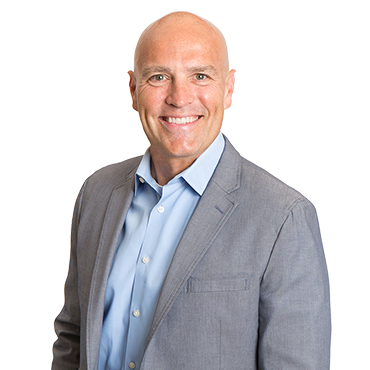
Consumers have long viewed cord-cutting as a way to watch video at lower prices and to break free from the limited traditional options of cable, fiber and satellite linear television—otherwise known as multichannel programming distributors (MVPDs). After all, streaming providers largely don’t have to ship equipment to most users, and no installation or infrastructure is needed beyond a broadband connection. And of course, viewers can watch content when and how they want without being tied to a set-top box.
But the subscription video on demand (SVOD) model had its shortcomings. At first, providers like Netflix had no way of offering live content such as news and sports, so consumers viewed streaming as an addition to their traditional TV service. And though some consumption of news moved online, live sports kept viewers tethered to their cable or satellite services, allowing those providers to keep prices high to retain customers and pay providers’ ever-rising programming prices.
That changed when virtual multichannel programming distributors (vMVPDs) came along. With the ability to deliver live TV via the internet, early vMVPDs such as Sling from Dish and PlayStation Vue from Sony were able to offer streaming video and live TV to customers for as low as $20 per month. Many vMVPDs have come and gone in this space since, including the exit of PlayStation Vue and the addition of YouTube TV, Hulu + Live TV and fuboTV.
But is cord-cutting really allowing consumers to access content at lower costs? Today, Hulu + Live TV and YouTube TV each charge consumers $64.99 per month for streaming services—a significant increase that closes the gap between them and traditional TV providers. As both traditional TV and streaming providers grapple with rising programming costs, there’s an opportunity for traditional TV providers to stay in the game, and even pull ahead. It all comes down to knowing what your customers want and how much they’re willing to pay.
Streaming Costs Are on the Rise
Over the last two years, streaming services from YouTube TV and Hulu + Live TV have gone up by about $25, while costs of traditional MVPD services have stayed mostly constant. But even with the price hikes, some would argue that these services are cheaper than traditional television offerings. A closer look shows that the gap is narrowing.
The top three traditional video providers—AT&T DirecTV, Charter Spectrum and Comcast Xfinity—are indeed more expensive per user. But price hikes, while consistent, have not led to significantly higher average revenue per user over the last two years. In fact, the trend line is not upward for any of these providers. When prices go up, traditional television consumers have a variety of packages to choose from and can skinny their package down to save money.
The biggest contributor to rising prices across traditional TV and streaming services is the cost of programming. As reported by multiple traditional video providers, cable companies spend an average of 60%–65% of their video revenue (not net income) on programming. This doesn’t include other expenses such as billing, infrastructure, customer support and equipment. With the cost of programming continuing to rise, this model isn’t sustainable. On the vMVPD side, rising programming costs have eaten into the margins that initially gave them an advantage over traditional TV providers.
Programming agreements are also quite complex. ESPN, for example, charges carriers such as Comcast and DirecTV at least $9 per subscriber for its suite of channels, which includes ESPN, ESPN2 and others. This is similar to what customers pay for the Netflix Basic package. While it would seem simple to allow customers to opt out of ESPN and save money, ESPN has it written in its carrier agreements that a certain percentage of the carrier’s base will have ESPN in their package.
With these extra costs passed on to the end user, it’s getting even harder for providers to attract and keep customers.
How Providers Have Tried to Stay Competitive
In order to mitigate the high cost of programming, providers are looking at ways to keep margins up while retaining their customers. One common tactic is to increase the end user price yet advertise promotional, temporary pricing. Both traditional television and vMVPD providers commonly advertise special pricing that’s good only for a limited time. For example, AT&T DirecTV advertises $69.99 per month for its Choice Package, which includes HBO Max and NBA League Pass. But the small print states that subscribers must pay an extra $9.99 regional sports fee per month, and after 12 months, subscribers will pay an extra $14.99 per month for HBO Max.
Promotional advertising aside, steadily increasing prices to the consumer has led to customer defection as well as customers opting for cheaper packages with fewer channels. While eMarketer forecasted 80.5 million pay TV households for 2020, in August it downgraded that figure by 7.5% to 77.6 million. The pandemic partially impacted these figures as consumers cut back on spending and sporting events were cancelled, but the downward trend for traditional TV providers was already in motion.
Providers have also tried to stay competitive by fighting programming content providers, leading to blackouts and more customer defections. And some have become content providers themselves. Comcast has done this by acquiring NBC Universal, and AT&T with Time Warner Media, which includes HBO and CNN. On the streaming side, Disney owns a large stake in Hulu, and has full ownership of ESPN, Disney channels and ABC.
Finding the Right Hook
As the competition heats up, providers are jockeying for position by branching out to mobile and other ISP-based services, bundling content and services or using data caps to persuade customers to purchase other products. Cable companies like Charter Communications (Spectrum) and Comcast (Xfinity) offer low-cost mobile services to help drive sales of their other products. Both Spectrum Mobile and Xfinity Mobile require customers to subscribe to their internet service before signing up for a new plan.
Providers are taking the same approach with streaming content. Xfinity bundles streaming apps with its home internet service, so if its customers want the content, they’ll need to pay for Xfinity’s internet. Both Cox and Comcast offer unlimited streaming data plans to their video customers—their other customers are hit with data caps.
Here are a few more examples of how providers are trying to find the most compelling services like video and other offerings to hook customers:
- AT&T offers Data Free TV with its wireless plans, and free HBO Max with certain Unlimited Elite Plans.
- T-Mobile includes Netflix with its Magenta® plans and offers customers discounts and freebies through its T-Mobile Tuesdays app.
- Metro® by T-Mobile offers an unlimited data plan that includes Amazon Prime and Google One.
With so many choices, knowing what’s going to keep your business ahead of the competition can become overwhelming.
Recommendations
- Get your services into the home. Recent research we conducted for a traditional TV provider has shown that what consumers need now is stable home internet and streaming services. This makes sense as more people are working and attending school from home due to the pandemic. Based on these findings, we recommend that providers find a way to get their services into the home by identifying an anchor product, such as broadband or wireless service. Charter Communications and Comcast have already made this move, while T-Mobile has recently expanded its Home Internet pilot service, launched in 2019. T-Mobile has also recently added 5G capabilities to its home internet product, which provides a more competitive speed to more traditional home internet services.
- Focus on compelling offerings rather than limits. While data caps and bundles with requirements might persuade customers to buy additional services, brand reputation and loyalty will be stronger if you focus on the most compelling offers instead. Similar to T-Mobile’s free subscriptions to Netflix, Verizon includes Disney+, Hulu and ESPN+ in certain cellular plans at no extra cost, and a free year of Discovery+ to its 5G Home or FIOS Home Internet subscribers. Consumers haven’t placed much trust in cable providers in the past due to hidden fees. Take appropriate action to earn that trust back.
- Learn what your customers want and what they’re willing to pay for. There are many ways to outshine the competition, but choosing the right one isn’t easy. Through market research, Escalent can help you identify what your customers want, what they will pay for, and how to position your offering to get the most bang for your buck.
Strategic Summary
Increasing programming costs are putting a strain on traditional TV providers, and is also causing vMVPDs to lose their pricing advantage. This opens up the opportunity for providers to differentiate themselves by giving customers the products and services they need most at the best price point. Escalent can help you keep tabs on the changing landscape with research around customer needs and pricing while helping you identify the products that will provide you with long-term success.
If you need help identifying your most competitive products and price points, send us a note.









